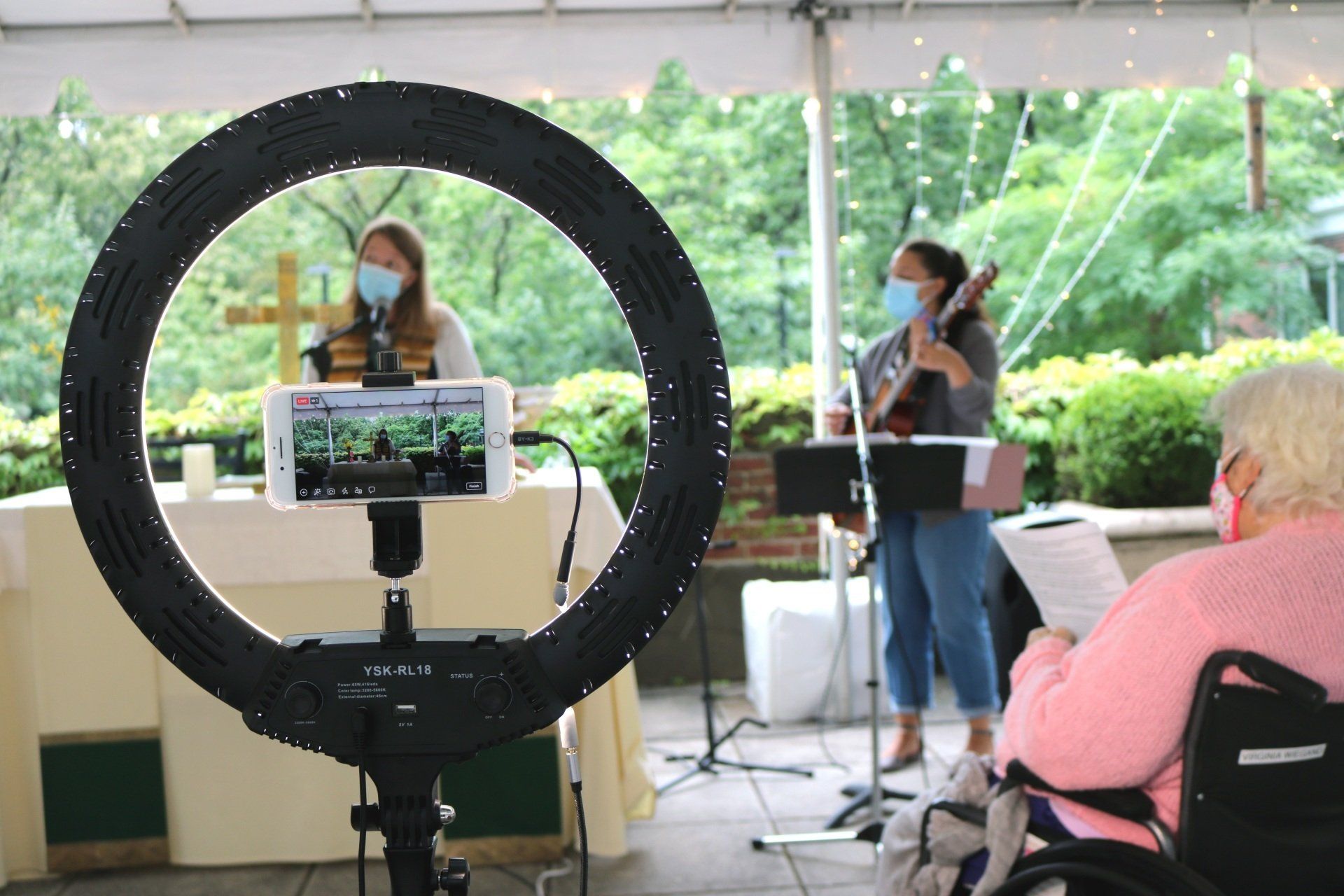News
HOME > News
'It just felt like this incredible gift’; Nursing home chaplain who got COVID caring for sick residents stands at front line of battle
By Tanner Stenning
When the Rev. Lindsay Popperson went to visit residents sick with coronavirus at the Sherrill House in April, she was dressed to the hilt in personal protective garb.
Unrecognizable with a face-shield, an N95 mask and a blue gown, Popperson, the nursing home’s chaplain wore a printed-out sign displaying her face and the face of her therapy dog “Pope Joan,” so that residents — many of them fatally ill with COVID-19 — knew who she was.
The duo have been a regular presence at the non-profit long-term care outfit for several years, offering “spiritual care” to residents who feel cutoff from their communities of faith. This has meant everything from weekly worship services at the Boston facility, to bedside visits from her Shih Tzu springer spaniel.
Popperson is ordained in the United Church of Christ, but not all of her work as a chaplain is associated with the church, or any one faith. It’s also meant listening, holding hands and being present for residents in need — a kind of intimacy that took on new meaning during the COVID pandemic.
“Hand-holding has become this really precious resource” during the pandemic, Popperson said. “It just felt like this incredible gift that I got to be in these rooms and holding peoples’ hands.”
Like long-term care facilities across Massachusetts, the Sherrill House was hit with a wave of infections at the height of the COVID-19 health crisis. Thirty-two of its residents died from the disease, and 93 recovered.
Ahead of the surge in cases, the Sherrill House was the first Massachusetts facility to stop allowing visitors — a move that staff say helped to save lives.
“There’s no question it made a difference,” Pattyanne Lyons, the facility’s director of development said.
But the virus would take its toll on residents in a fashion we’ve become accustomed to hearing about: those infected would be quarantined, away from everyone else living and working in the facility, and away from their families.
Popperson, who contracted the virus herself, has known and cared for many of Sherrill House’s residents for years. So when many became sick and couldn’t see their loved ones due to infection control protocols, the 32-year-old chaplain found herself in a position to be that person in the room, at the bedside — a source of humanity and comfort at a time when the world was learning the pain of a new kind of separation: social distancing.
“My job is to sit with them in their suffering,” Popperson said, “to help connect them to what’s holy and what’s important and what gives them meaning, and to really know them and love them.”
Popperson said she would sing hymnals and guide residents through prayers and meditations. There was also artistic exchange, a sharing of poems and other personal items.
Popperson remembers one woman, who she described as lively, artistic and, in some ways, resistant to the idea of living in a nursing facility, who died from COVID-related complications.
It began with a fever; then it was only a matter of days, Popperson said, before she passed away. Popperson was with her the day she died.
Although barely responsive, the woman was able to mouth the words to a prayer she knew well, with Popperson by her bedside.
“On that last day, this old woman was still praying her prayers,” she said. “And she so knew that she wasn’t alone.”
Long-term care facilities suffered the brunt of coronavirus infections early on in the crisis. Holyoke Soldiers' Home, a long-term care facility for veterans, lost 76 residents, a third of its population, back in March and April.
The Department of Public Health began reporting on cases and deaths statistics on a weekly basis in the wake of so many deaths from the virus. At the height of the crisis, nearly half of Massachusetts deaths from COVID-19 were from long-term care facilities.


